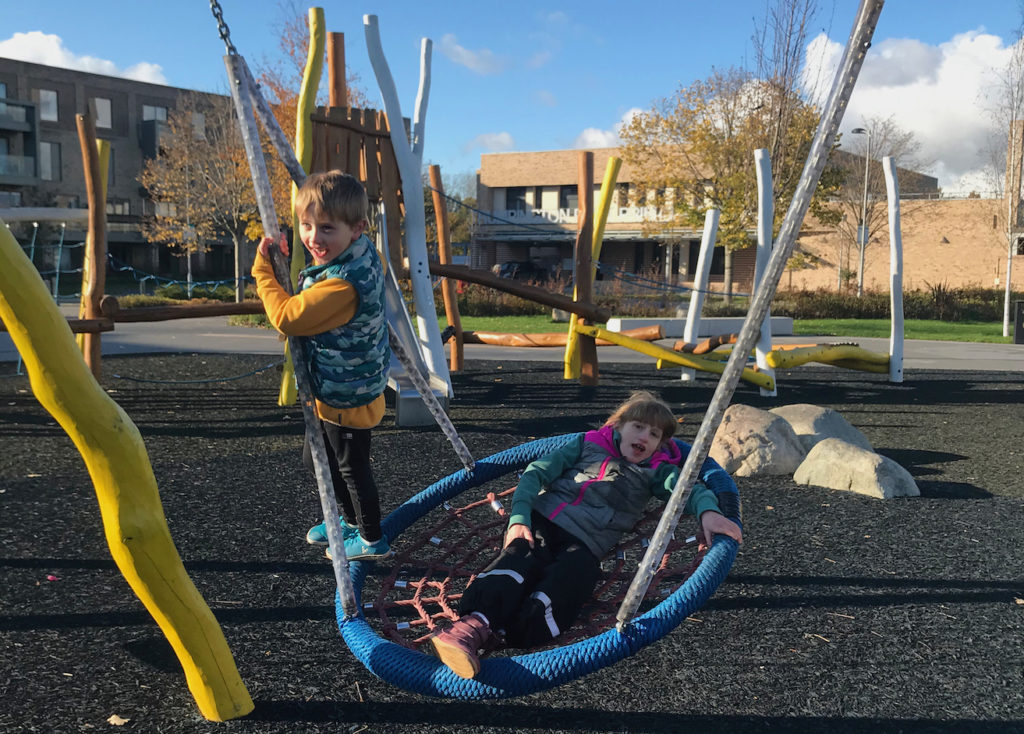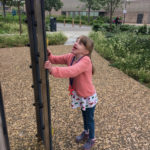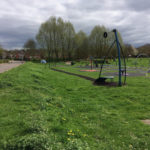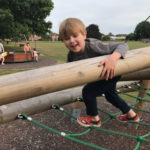When we take children to visit a beach, a wood or a country park we don’t expect there to be a fence to keep them close to us or to keep dogs away, instead we naturally shadow and guide little ones and give verbal boundaries for bigger ones. The ability to explore these natural spaces is not only crucial for their well-being, but also essential for children to experience their right to roam.
These realities have influenced best practice for play design and inspired our Playscape.
Great Shelford Playscape’s mission is to create a place that encourages everyone to play more. We believe passionately in inclusivity and that means all ages and abilities. According to Design for Play: A guide to creating successful play spaces one of the best practice principles is to not segregate by age or ability and that:
“Fenced boundaries around play spaces tend to make them feel segregated from their surroundings and there is a growing view that the presence of fencing can discourage some children from using the play space.”
Indeed, we’ve learnt first hand from our local young people that they will not play in a fenced area even though they want to as it implies it is for younger children only. So whilst a fence can keep dogs out, it also suppresses play opportunities, making the space more exclusive. It also creates pinch points at the gates, creating more wear and it is hard for those in a wheelchair to negotiate.
We are used to seeing fences around playgrounds so assume that it is a necessity, indeed that is how the green fence came about – it was “the thing to do”. However, there are many successful local playgrounds without fencing: both Sawston playgrounds, Lammas Land in Cambridge, Trumpington Clay Farm playgrounds and Cherry Hinton Hall Mill area to name but a few, which should encourage us that this a mainstream approach.
Healthy Boundaries
The report also recognises the concerns of parents and carers who “may appreciate the sense of security which a fenced boundary creates to keep their children safe from straying outside the play space or from dogs”. It goes on to say:
“However, there may be other more satisfactory ways of creating boundaries that add to the play value of the space and make it feel more pleasant to use. Planting a hedge; creating a change in level; siting the whole space in a shallow hollow in the ground; surrounding it with a low wall where people can also sit; the possibilities are numerous. Playworkers call this creating ‘fuzzy edges’.”
These considerations have underpinned the design. The mounds (which match the height of the current fence) and flowerbeds, hug the play area, making a clear edge for all users to identify the playscape, whilst not compromising access or playability of the landscape. Signs will also make it clear that the Playscape is a dog-free zone.
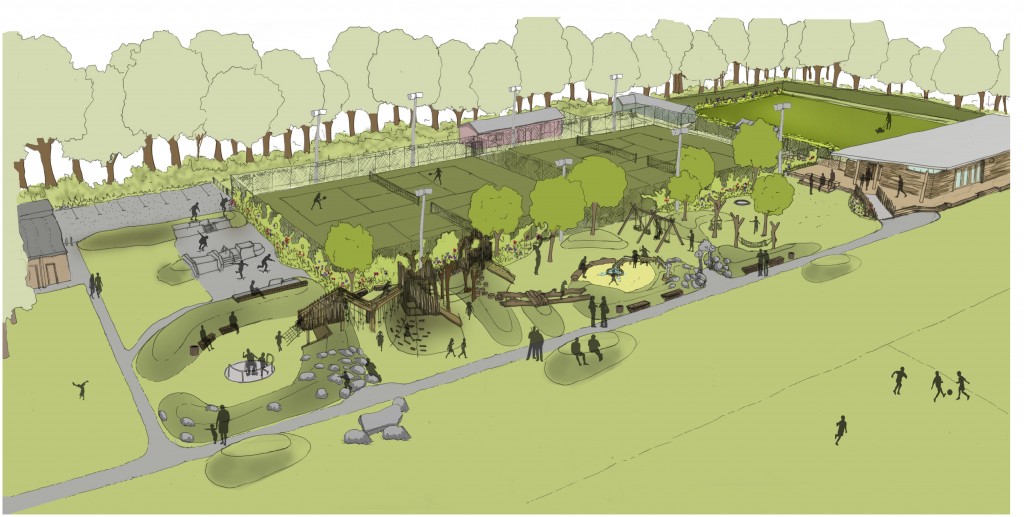
Where we will be installing a fence is along the car park boundary. Currently, a scaffold pole barrier doesn’t stop children nipping straight under and into the path of a car. By re-locating the green bow-topped fence along this edge we will be addressing this genuine safety risk.
Expect children everywhere!
If we are passionate about keeping children safe then this should apply to the recreation ground as a whole. Children – including the very youngest toddlers – use all of it: whether feeding the ducks, playing in the willow dome, running around after a ball, or simply sitting with their parents enjoying a picnic. The whole recreation ground is a shared space and responsible dog ownership should be encouraged at all times in this public place.
What about Dogs?
A number of our committee members are dog owners and many of us have young children so we understand the challenges.
It is important to note, however, that this area is a sport and recreation ground set aside for exercise and so although dogs are welcome on the rec the bylaws require owners to keep them off the sports pitches and playground, and pick up after them.
Certainly a few owners do not clear up after their dogs and so we would recommend a review of dog bin provision, plus a campaign promoting responsible and considerate dog-ownership, such as a scoop the poop campaign and clear signs indicating dog-free zones.
The Design for Play report cites a case study at Causewayhead Park:
“In many locations it should be possible to adopt a much more positive attitude to the management of dogs, (rather) than fencing them out, as has been done at Causewayhead Park. Here, play area fencing has been removed and the council has worked with the local community to promote responsible dog-ownership, resulting in dog owners having access to the whole park.”
Design for Play: A guide to creating successful play spaces was produced to support the previous Government’s Play Pathfinder and Play Builder programmes. This study is endorsed by the HSE, RoSPA, and various Government departments and is widely regarded as capturing best practise in play provision.

